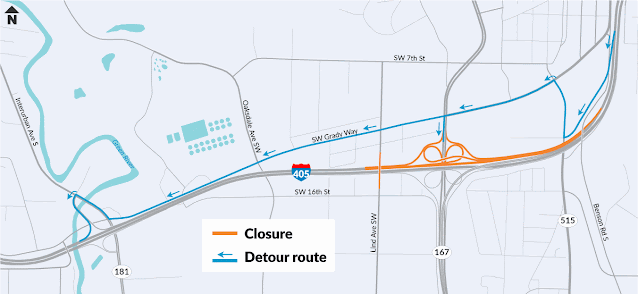By Lauren Loebsack
Seems like only yesterday we celebrated the spring opening of the North Cascades Highway, the section of State Route 20 between Newhalem gate (mileposts 121) and Early Winters gate (milepost 178), but that day this past May is far behind us and so is summer, meaning the countdown is on to the seasonal closure.
When will that be? We don’t know yet – depends on the weather – but no doubt it will be here soon.
 |
| The weather can change quickly on the SR 20 North Cascades Highway. These pictures were taken within two days of each other in October. |
Why do we close the North Cascades Highway?
The stretch of SR 20 that crosses Rainy and Washington passes also crosses dozens of avalanche paths between Whistler Mountain and Delany Ridge. Unlike Stevens Pass and Snoqualmie Pass where our avalanche control teams use a variety of techniques to clear the avalanche chutes in the winter, staffing, funding and proximity to the national park make it not feasible to do ongoing avalanche control through the winter in the North Cascades.
This route is sometimes referred to as the “North Cross” and is a useful route for freight, medical travel, commerce, and recreation, so our maintenance crews plow this section of SR 20 until it is no longer safe to work in the area due to avalanche conditions. At that point, we close the gates for the season to ensure the safety of the traveling public and our hard-working crews.
While the weather dictates when the North Cascades will close and thus we never know for sure, you can see when the pass has closed and opened in previous years on our web page. For those planning an end-of-season trip, it’s best to keep an eye on the forecast and be prepared for winter conditions in the mountains starting now.
Why do we move the closure points mid-winter?
While initially we close the pass between mileposts 134 and 171, when winter comes to lower elevations, we have to focus our resources on those communities, so we extend the closure points to Newhalem gate (milepost 121) on the west side, and Early Winters gate (milepost 178) on the east side.
Like the seasonal closure, the shift to mid-winter closure points is due to weather and conditions and can come at short notice. For those that use the area behind the closure points for winter recreation and need to know where you can access or park, we’ll get the word out about the mid-winter change through the same channels we use to announce the closure.
Check in for updates. …
We’re already past Oct. 17, which is the earliest winter closure date SR 20 has had and occurred in 2003. Every season is unique, but autumn is definitely transitioning to winter in the mountains, so now is the best time to plan for winter conditions and the potential for closure as we’ve already seen snow blanket the highway.
We will begin with our regular mountain pass reports Nov. 1, which populates with real-time pass updates. Crews will plow the road as needed. As soon as the team determines the route must close, we will share that information through our GovDelivery listserv topic “North Cascades Highway Newsletter” and Facebook.
Frequently asked questions
Whether this is your 1st year or 51st year following North Cascades Highway news, here are some of the frequently asked questions about the North Cascades and the seasonal closure:
- Why don’t we just set a date for the closure? Every season is different and keeping the North Cross open for as long as possible provides a more direct route for freight, recreation, and the communities on each side of the mountains.
- Can I park at the closure points? The gate closure locations are in place for the safety of the traveling public, safety of our crews and at locations where adequate parking is available for backcountry users while still providing access and maneuverability for crews clearing the road to the gate.
- Am I allowed to go beyond the gate for recreation? Yes! But. …remember, this is a very active avalanche area that sees a huge amount of snow and has lots of potential hazards. So always be prepared if you choose to ski, snowshoe, snow mobile, etc., beyond the closure gates.
- Why aren’t there any traffic cameras on Rainy or Washington passes? Since the passes close for up to half the year, the expense of installation and maintenance of cameras doesn’t justify the need. With tons of avalanche activity potentially damaging the equipment and no traffic, there’s little value in having cameras up there. There are cameras on other parts of SR 20 that remain open all year.
- What is the elevation of the North Cascades? Rainy Pass is 4,855 feet and Washington Pass is 5,477 feet.
- There is a snow park at Silver Star gate, why don’t we stay open all winter to the park? At a certain point in the winter, the snowpack will become too deep for our equipment to manage and we need to focus resources on priority routes.
No matter the reason you follow NCH news, we want you to be prepared. While we handle the road, there is much more going on in the North Cascades. Here are some links to keep up-to-date on other happenings in the national park and forest:
- North Cascades National Park Service: https://www.nps.gov/noca/index.htm
- US Forest Service: https://www.fs.usda.gov/recarea/mbs/recreation/recarea/?recid=17650&actid=29
- Northwest Avalanche Center: https://nwac.us/ (forecast updates coming soon)
























